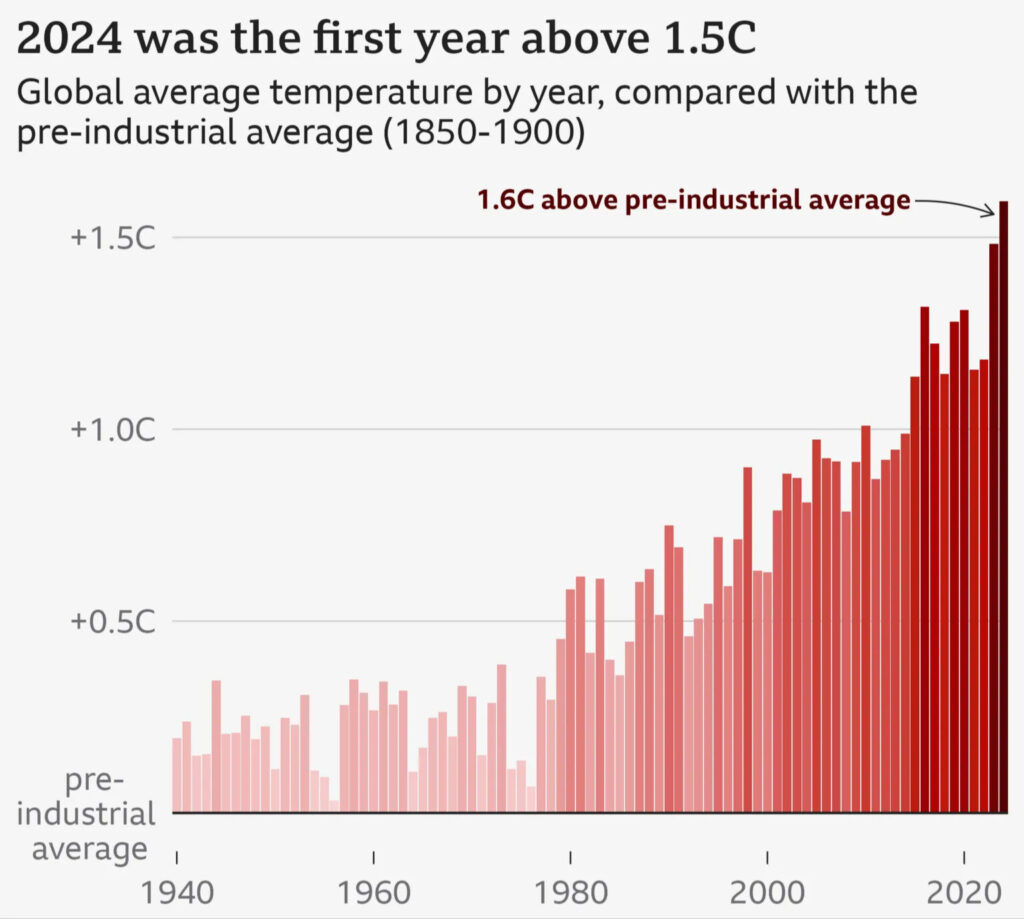The year 2024 has marked a concerning milestone in the fight against climate change, becoming the first year where global temperatures surpassed 1.5°C above pre-industrial levels. Scientists and climate experts warn that while this breach is temporary, it signals humanity is edging dangerously closer to long-term climate thresholds.
According to climate monitoring data, the surge in temperature is primarily driven by human-induced global warming due to greenhouse gas emissions, compounded by the natural El Niño weather pattern. El Niño, which causes warmer ocean waters in the Pacific, added an extra layer of heat, but the root cause remains the accumulation of carbon dioxide and other gases in the atmosphere.
The effects of this record-breaking heat have been devastating. Regions worldwide experienced intensified extreme weather events, from severe flooding in parts of Europe and Asia to droughts crippling countries in Africa. Such phenomena have not only disrupted ecosystems but have also taken a heavy toll on human lives and livelihoods.
Samantha Burgess, deputy director at the Copernicus Climate Service, emphasizes that this 1.5°C breach highlights the urgency of immediate action. “This isn’t a point of no return, but it’s a wake-up call,” she says. “The future is still in our hands if we act now to reduce emissions drastically.”

The 1.5°C threshold was established during the 2015 Paris Agreement as a crucial target to minimize the worst impacts of climate change. Staying within this limit could prevent catastrophic consequences such as rising sea levels, loss of biodiversity, and more frequent and severe heatwaves. However, experts predict that without aggressive global action, the world could permanently breach this level by the early 2030s.
Despite the grim statistics, scientists insist it’s not too late to slow the trajectory of climate change. They urge governments and industries to accelerate their transition to renewable energy, phase out fossil fuels, and adopt sustainable practices. Individuals, too, have a role to play, from reducing waste and conserving energy to supporting policies that prioritize climate action.
Zeke Hausfather, a climate scientist, explains that every fraction of a degree matters. “It’s not the difference between disaster and safety, but between bad and worse outcomes. Limiting warming to 1.6°C or 1.7°C is still better than allowing temperatures to spiral to 3°C or more.”
The year 2024 serves as a stark reminder that the window to act on climate change is narrowing. With collective effort, there is still hope to shape a future where the planet remains habitable for generations to come.










